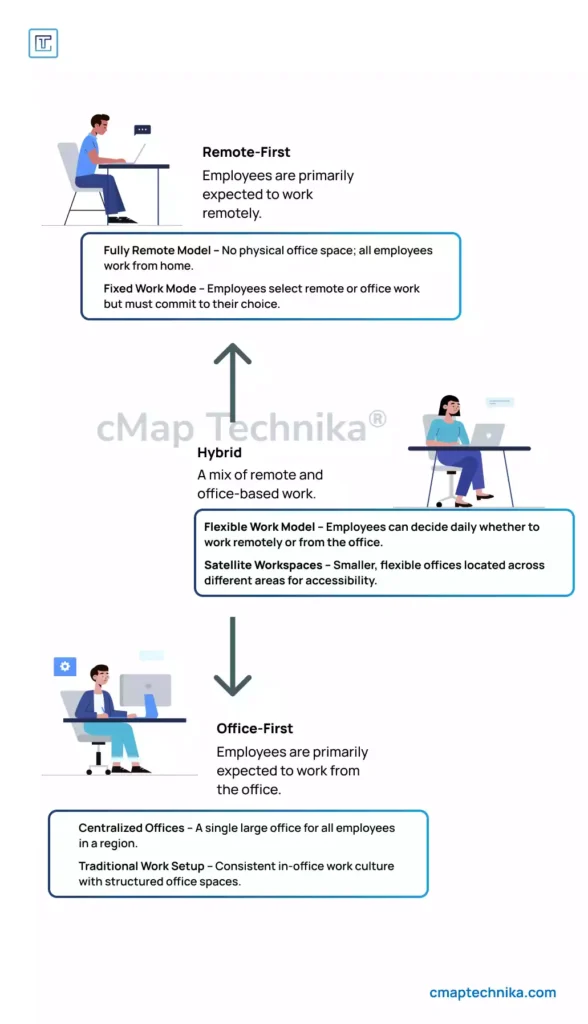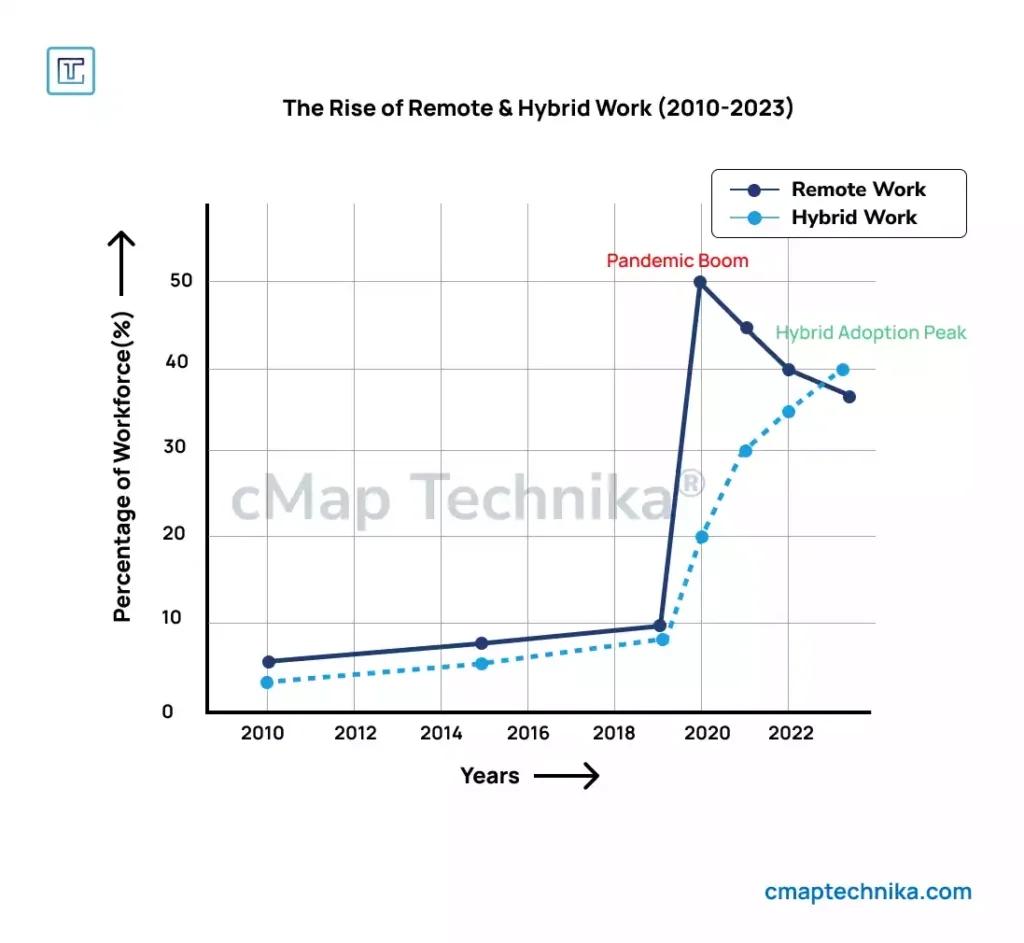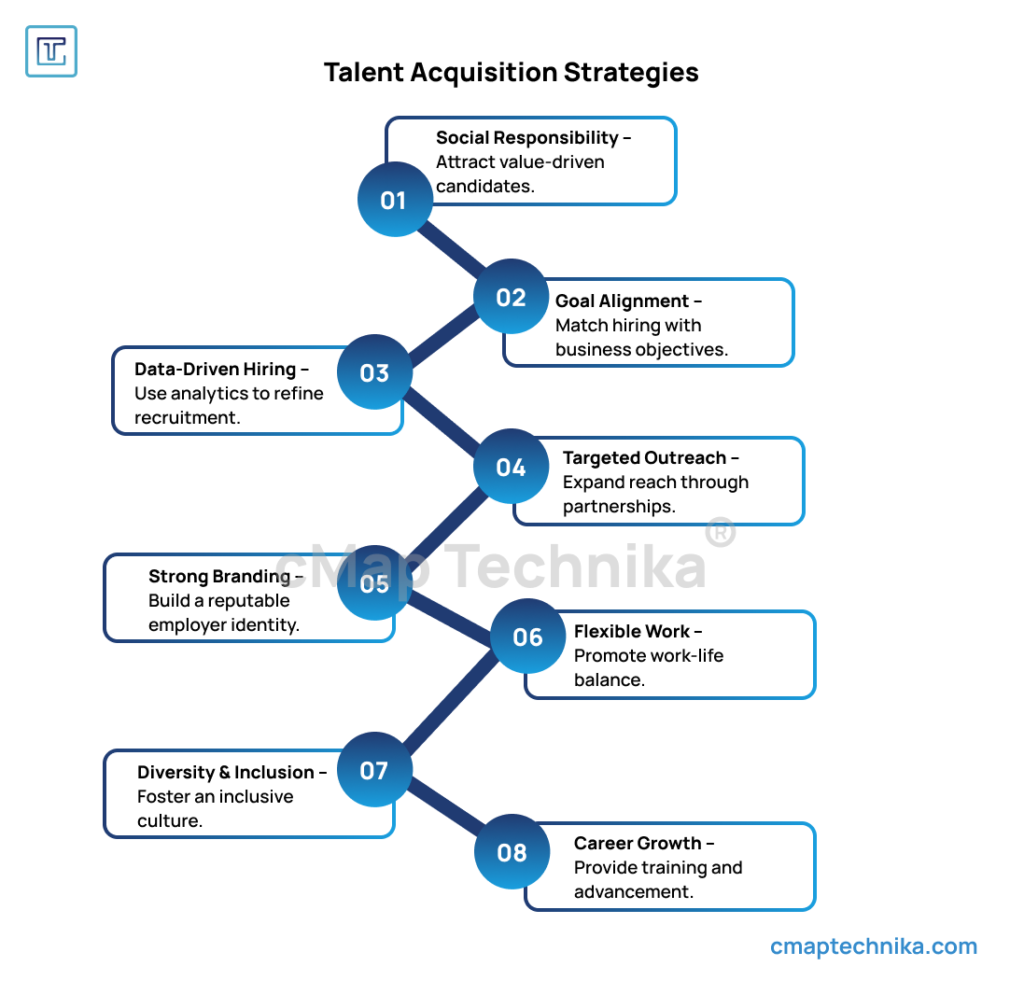Remote work and hybrid hiring have fundamentally reshaped the talent acquisition landscape. The shift from traditional office-based models to more flexible, digitally driven work environments has accelerated over the past decade, driven largely by advancements in technology and changing workforce expectations. The global COVID-19 pandemic served as a catalyst for this transformation, forcing organizations to rapidly adopt remote work models and rethink their hiring strategies. Now, remote and hybrid work have become long-term fixtures in the business world, presenting both challenges and opportunities for talent acquisition.
This white paper explores the structural impact of remote and hybrid work on talent acquisition, providing a detailed analysis of the evolving labor market, recruitment strategies, employer branding, and technological enablers. It outlines best practices and long-term strategies for attracting, hiring, and retaining talent in this new paradigm.
1. The Evolution of Work Models

Remote and hybrid work have evolved from being temporary responses to global disruptions to becoming central components of modern workforce strategies.
1.1 The Rise of Remote Work

Remote work has grown exponentially over the past decade, driven by improvements in communication tools, cloud computing, and digital infrastructure. Even before the pandemic, companies were experimenting with flexible work arrangements to improve employee satisfaction and reduce costs.
- 2010–2019: The percentage of remote workers grew steadily, with industries like technology, professional services, and finance leading the shift.
- 2020–2021: The pandemic forced a rapid and widespread adoption of remote work. According to McKinsey, over 50% of the global workforce shifted to remote work during the pandemic.
- 2022–Present: Remote work has become normalized, with companies adopting hybrid models that blend in-office and remote work.
1.2 The Shift to Hybrid Work
Hybrid work — a model where employees split time between remote and on-site work — has emerged as the dominant model for many industries. A report by Gartner indicates that over 70% of companies have adopted or plan to adopt hybrid work models.
- Increased Flexibility: Employees gain more control over their work environment and schedule.
- Cost Efficiency: Companies can reduce office space and associated costs.
- Access to Global Talent: Employers are no longer limited to local talent pools.
2. Impact on Talent Acquisition
Remote and hybrid work models have transformed how companies source, assess, and hire talent.
2.1 Expanding the Talent Pool
Remote work removes geographical barriers, allowing companies to access a broader and more diverse talent pool.
- Global Reach: Companies can hire talent from different time zones and regions, increasing diversity and specialized expertise.
- Skill-Based Hiring: Employers can prioritize skills and experience over location, improving talent matching.
- Diversity and Inclusion: Remote work facilitates hiring individuals from underrepresented groups and regions.
Example:
GitHub, a fully remote company, reports that its diverse, global talent base has contributed to increased innovation and product success. By hiring from a wider pool of developers, GitHub was able to accelerate product releases and improve customer satisfaction.
2.2 Competitive Edge Through Flexibility
Flexible work arrangements have become a key factor in attracting top talent. Studies show that over 70% of employees consider remote work flexibility a major factor in job selection.
- Work-Life Balance: Employees value the ability to manage work and personal life more effectively.
- Employee Retention: Companies offering flexible work options have higher employee satisfaction and lower turnover rates.
- Recruitment Differentiation: Flexible work policies can enhance employer branding and position companies as attractive places to work.
Market Insight:
A 2023 report by Gallup found that companies offering remote or hybrid work options had 35% higher employee retention rates compared to those with rigid in-office requirements.
2.3 Challenges of Remote Talent Acquisition
While remote and hybrid hiring broaden talent access, they also introduce new challenges.
- Candidate Assessment: Evaluating soft skills and cultural fit becomes harder without face-to-face interactions.
- Onboarding and Integration: Integrating remote employees into company culture requires a structured approach.
- Legal and Tax Compliance: Hiring across borders involves navigating local labor laws and tax regulations.
Example:
A global financial services firm faced difficulties assessing leadership potential when hiring remotely. They introduced AI-based assessment tools and virtual panel interviews to better evaluate candidates’ soft skills and strategic thinking.
3. Technology as an Enabler
Technology plays a critical role in supporting remote and hybrid hiring processes.
3.1 AI-Driven Recruitment Platforms
AI-powered applicant tracking systems (ATS) automate resume screening and identify top candidates based on skill matching and predictive analytics.
- HireVue and Pymetrics use machine learning to analyze resumes and predict candidate success.
- AI platforms provide data-driven insights to improve hiring outcomes and reduce bias.
Example:
A Fortune 500 technology company implemented AI-driven ATS software, reducing time-to-hire by 40% and improving candidate quality through predictive modeling.
3.2 Virtual Interviewing and Assessment Tools
Virtual interview platforms allow companies to conduct structured interviews and real-time candidate assessments remotely.
- Platforms like Zoom, Microsoft Teams, and HireVue support structured virtual interviews.
- Behavioral analysis tools assess candidates’ communication skills and emotional intelligence.
Example:
A leading healthcare provider reported that structured virtual interviews reduced recruitment costs by 30% while increasing candidate satisfaction scores.
3.3 Digital Onboarding and Training
Remote work requires a structured onboarding process to ensure new hires feel integrated and aligned with company culture.
- Learning Management Systems (LMS): Platforms like Workday and Docebo facilitate remote training and skill development.
- Virtual Onboarding Portals: Customized onboarding tools provide step-by-step guidance and company resources.
Example:
Salesforce introduced a virtual onboarding program that improved new hire productivity by 25% within the first 90 days.
4. Best Practices for Remote and Hybrid Hiring
4.1 Define a Clear Remote Work Policy
- Outline expectations for work hours, communication protocols, and technology usage.
- Include guidelines for performance measurement and career progression.
4.2 Focus on Skills Over Location
- Shift focus from geographical location to skillset and experience.
- Develop a structured, competency-based evaluation framework.
4.3 Strengthen Virtual Employer Branding
- Use social media, career websites, and virtual events to showcase company culture.
- Highlight employee testimonials and remote work success stories.
4.4 Enhance Virtual Onboarding
- Create an engaging and structured onboarding process.
- Assign mentors to help new hires integrate into the team.
4.5 Leverage AI and Automation
- Use AI for resume screening, candidate assessment, and interview scheduling.
- Automate administrative tasks to improve efficiency.
5. Long-Term Strategies for Talent Acquisition

5.1 Build a Talent Pipeline
Develop long-term relationships with potential candidates through networking events, social media engagement, and alumni programs.
5.2 Prioritize Diversity and Inclusion
Adopt hiring practices that promote diversity and remove unconscious bias. AI can help identify and eliminate biased language in job descriptions and hiring processes.
5.3 Monitor and Adapt
Regularly review hiring data and employee feedback to refine remote and hybrid work strategies.
6. Conclusion
Remote and hybrid work models are not temporary trends—they are the future of work. Companies that successfully adapt their talent acquisition strategies to these models will gain a competitive advantage in attracting and retaining top talent. The key lies in balancing flexibility with structure, leveraging technology to streamline processes, and maintaining a strong focus on diversity and inclusion.
At Waltcorp, we specialize in helping companies navigate the complexities of remote and hybrid hiring. Our tailored strategies and data-driven insights enable organizations to build a resilient and adaptable workforce, ensuring long-term success in a rapidly evolving job market.






